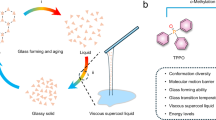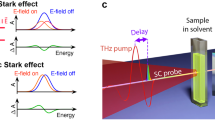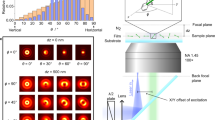Abstract
IT is well known that certain binary mixtures of organic liquids show opalescence at suitable temperatures. It was first shown by Krishnan1 that the value of the factor of depolarization of the light scattered transversely by such a mixture with the incident light vector horizontal is different from unity, and this was ascribed by him to the formation of large clusters of molecules in the mixture. Although the opalescence is certainly produced by local fluctuations in density, the light-scattering data cannot furnish definite information regarding the actual composition of the particles producing the opalescence. It has, however, been shown recently by Sirkar and Sen2 and also by Sen3 that many ordinary organic liquids having polar molecules exhibit strong absorption in the ultra high-frequency region at suitable temperatures, and that the frequency in the region of absorption gives us an idea about the magnitude of viscous forces acting on the individual molecules, as pointed out by earlier workers. Since such viscous forces are produced by the surrounding molecules, any change in the intermolecular field produces a change in the frequency of the region of absorption of the ultra high-frequency radio waves, and this method is thus suitable for studying the nature of the intermolecular field acting on the individual polar molecule in opalescent binary liquid mixture. A programme for studying the absorption of ultra high-frequency radio waves in such opalescent mixtures has, therefore, been undertaken and the results obtained in the case of two such mixtures are discussed here.
This is a preview of subscription content, access via your institution
Access options
Subscribe to this journal
Receive 51 print issues and online access
$199.00 per year
only $3.90 per issue
Buy this article
- Purchase on SpringerLink
- Instant access to full article PDF
Prices may be subject to local taxes which are calculated during checkout
Similar content being viewed by others
References
Krishnan, R. S., Proc. Ind. Acad. Sci., 1, 911 (1949).
Sirkar, S. C., and Sen, S. N., Nature, 164, 1048 (1949).
Sen, S. N., Ind. J. Phys., 23, 495 (1949).
Author information
Authors and Affiliations
Rights and permissions
About this article
Cite this article
SIRKAR, S., CHOUDHURY, A. Nature of Grouping of Molecules in Opalescent Binary Liquid Mixtures. Nature 167, 198 (1951). https://doi.org/10.1038/167198a0
Issue date:
DOI: https://doi.org/10.1038/167198a0



